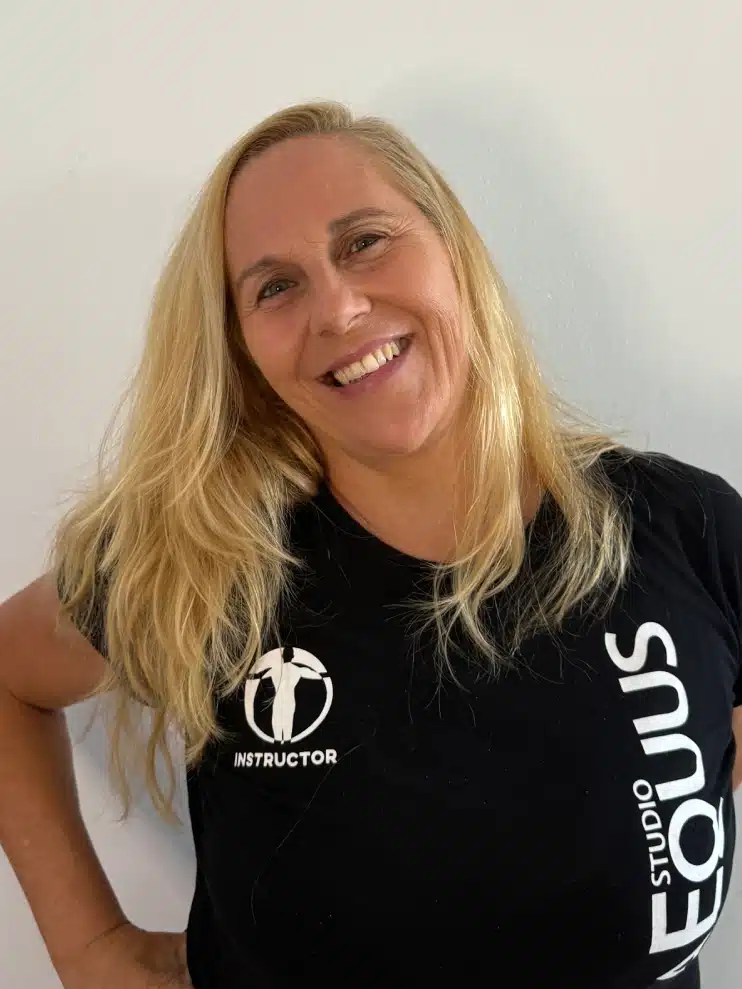Scoliosis
If you have scoliosis and experience pain, physical therapy and Pilates may be beneficial for some people with scoliosis, an option to relieve discomfort and improve function. Today in our Estudio Aequus blog article we give you effective strategies for managing scoliosis.
Physiotherapy can include different approaches, and one of them could be the use of INDIBA radiofrequency therapy, which is a physiotherapy technique that uses high-frequency currents to stimulate cell regeneration and improve blood circulation.
Here are some general tips, but always remember to consult a healthcare professional for advice specific to your situation:
Consultation with a Specialist:
Before beginning any treatment, including physiotherapy with INDIBA and Pilates-type exercise, it is crucial to consult a physiotherapist or scoliosis doctor with a holistic profile. They will be able to evaluate your case and determine if this technique is right for you, customizing a training plan.
Conventional Physical Therapy:
Conventional physical therapy may include specific exercises to strengthen the muscles around the spine, improve posture and reduce pain. Combine INDIBA therapy with traditional approaches if necessary.
Specific Exercises for Scoliosis:
Scoliosis-specific exercises can be an integral part of the physical therapy program. These exercises are designed to address spinal curvature and strengthen asymmetrical muscles.
INDIBA treatment:
INDIBA radiofrequency therapy can help reduce inflammation, improve blood circulation, cell regeneration, relax tight muscles and improve pain. Make sure that any INDIBA treatment is administered by a certified physical therapist.
Pilates exercises:
Pilates is known to strengthen core muscles, improve flexibility and promote proper posture, however, the practitioner must be very specialized in body dysfunctions, misalignments and pathologies to be beneficial and not generate a major problem.
Systems such as RGM Therapy “Much more than Pilates” are specially designed to exercise with pathologies, since before starting a “Pilates” program, it makes a good evaluation of your spine and how your discs are compromised.
In case of damage to the scoliosis, hernia, protrusion, extrusion, you can make a thorough evaluation and pass a report on your case to the competent professional to ensure that the exercises are adapted to your specific condition of scoliosis.
Work with your physical therapist and Pilates instructor to adapt the exercises to your specific condition. It is essential to avoid exercises that may put too much pressure on the spine.
Focus on Core:
Many “Pilates” exercises focus on strengthening the core muscles, which can be beneficial for people with scoliosis. A strong core can provide additional stability to the spine and thus prevent the spinal column from becoming more, “splinting” it muscularly with maximum functionality.
Stretching:
Gentle stretching can help improve flexibility and reduce muscle stiffness associated with scoliosis. A physical therapist can recommend specific stretches for your situation.
Regular Follow-up:
Performing Pilates with the supervision of a trained instructor is essential, especially if you have pre-existing health conditions such as scoliosis. The instructor can adjust the exercises according to your needs and limitations.
It is also important to have regular follow-up with your physical therapist to assess progress and adjust the treatment plan as needed. Therefore, the ideal is to go to a center where there is a professionalized multidisciplinary team.
Use of Assistive Devices:
In some cases, supportive devices, such as braces, may be recommended to help correct spinal curvature, especially in adolescents who are still growing, although the best brace is undoubtedly the body’s own.
Low Impact Aerobic Activities:
Activities such as swimming or cycling can be beneficial, as they are low impact and help maintain cardiovascular health without putting too much pressure on the spine, although they are not specific to scoliosis treatment.
Avoid Extreme Movements:
It is important to avoid movements and exercises that can put excessive stress on the spine, especially twisting movements and excessive loads.
Conscious Posture:
Postural awareness is key. Learning techniques, mechanizing correct movement to maintain proper posture in daily life can help reduce stress on the spine.
Consistency and Patience:
Improvement in conditions such as scoliosis often takes time. Be consistent with your physical therapy sessions and exercises, and be patient during the rehabilitation process.
Remember that these are general tips and do not replace personalized guidance from health professionals. Each case of scoliosis is unique, and treatment should be tailored to your individual needs.
• Licenciada en educación física INEF por la Universidad de Lleida.
• Maestría en aerobic.
• Maestría en Fitness.
• Maestría en gimnasia rítmica y deportiva.
• Instructor BTS de Body Balance y Body Pump.
• Tonificación, Step y Aerobic de Fitness Pentatlón.
• Instructor de ciclismo Indoor y Tot Cycling.

